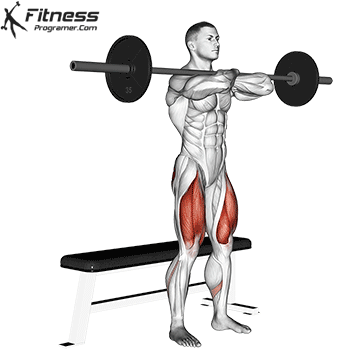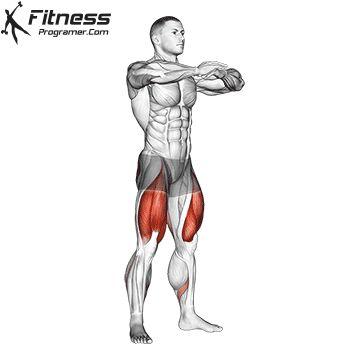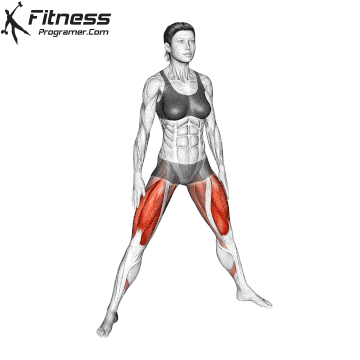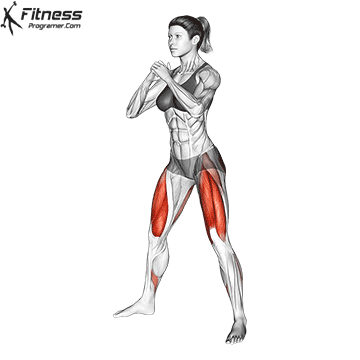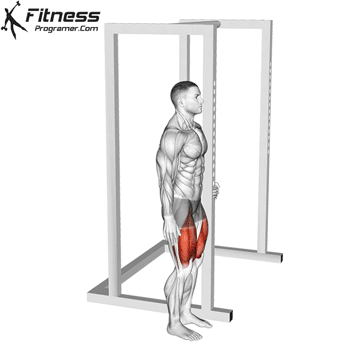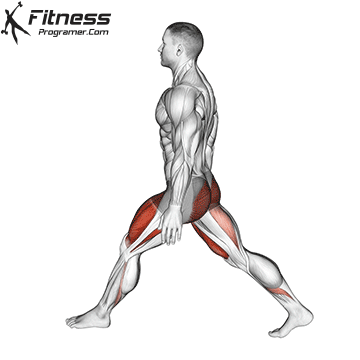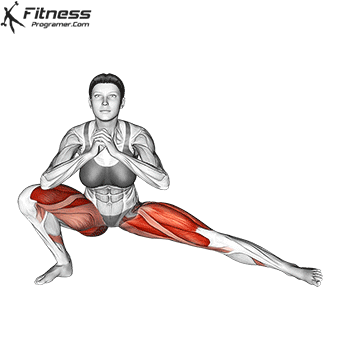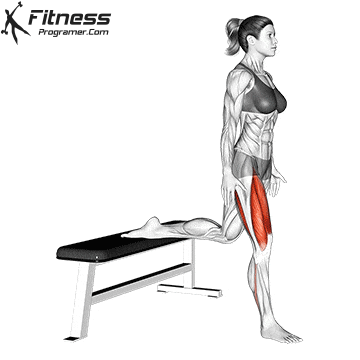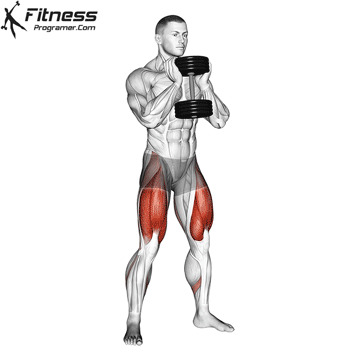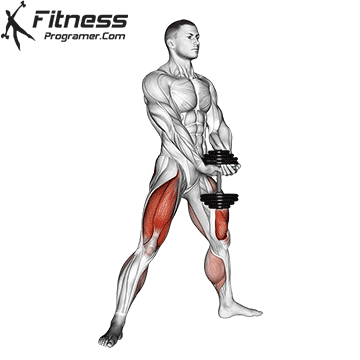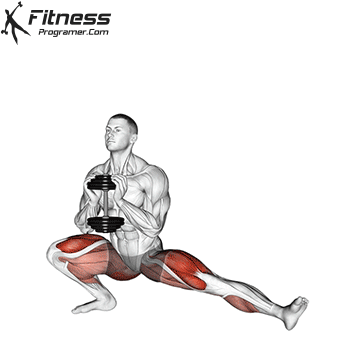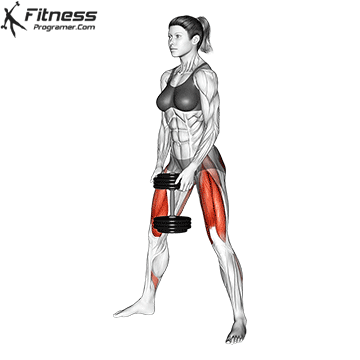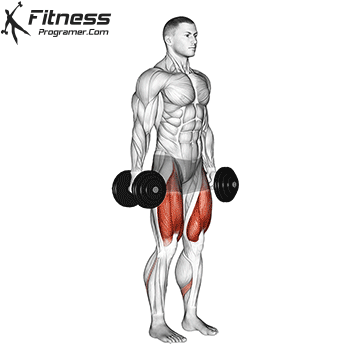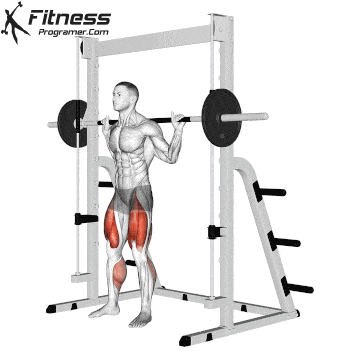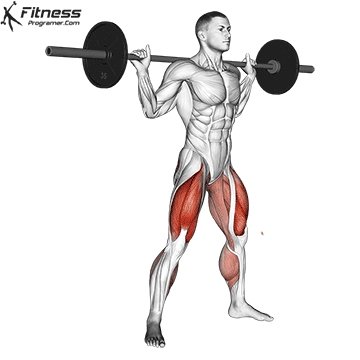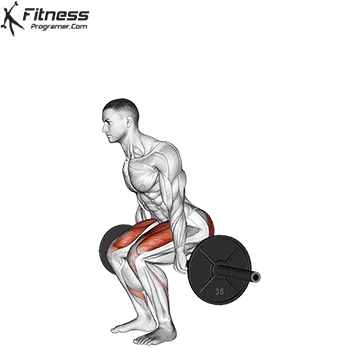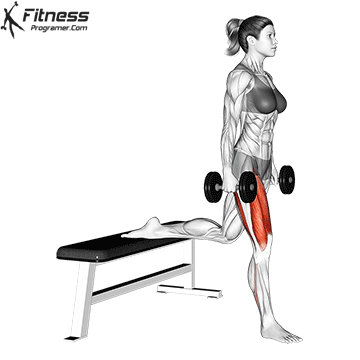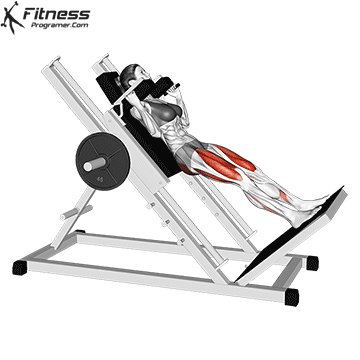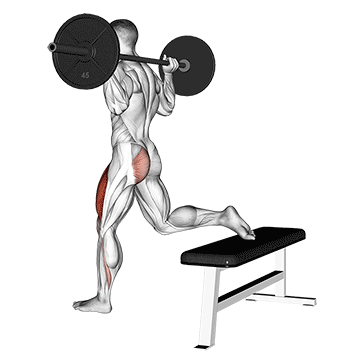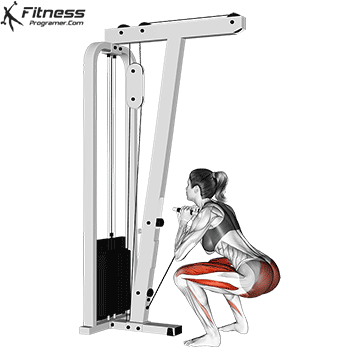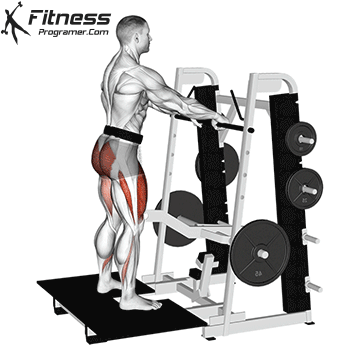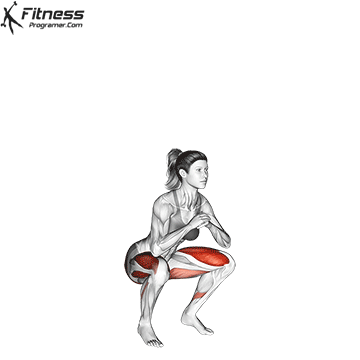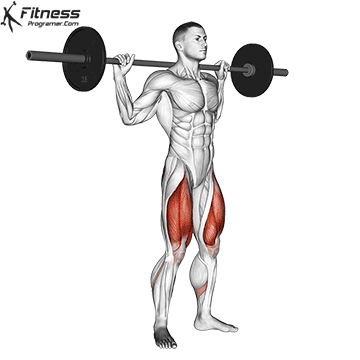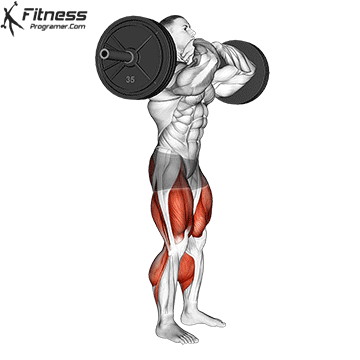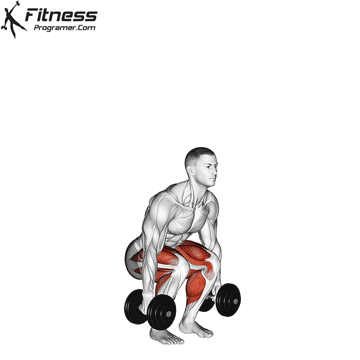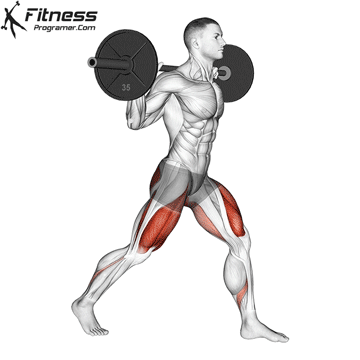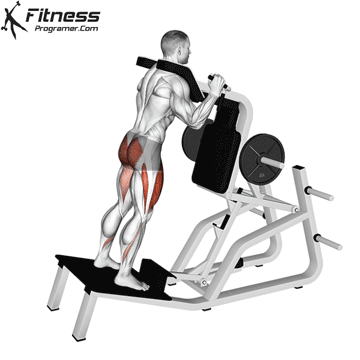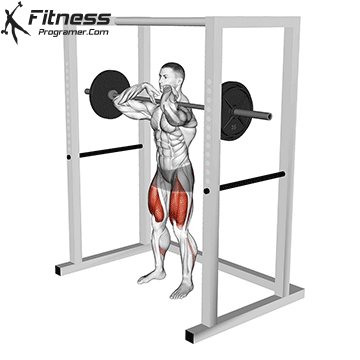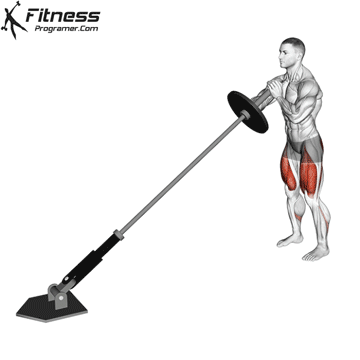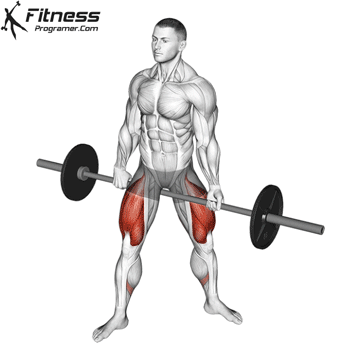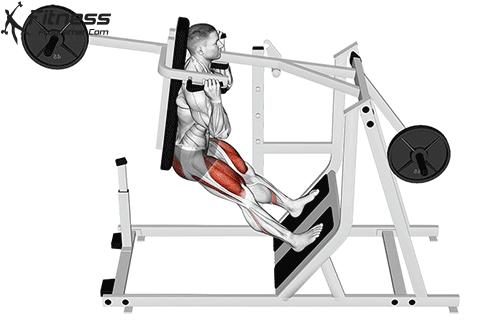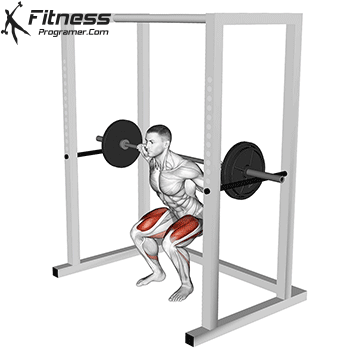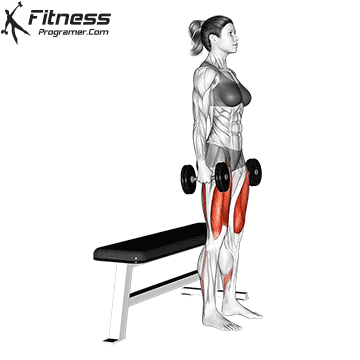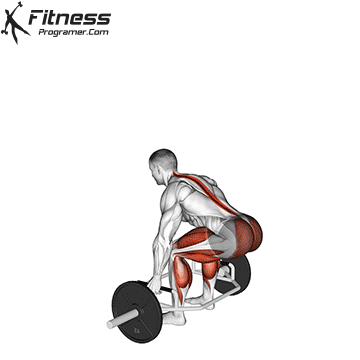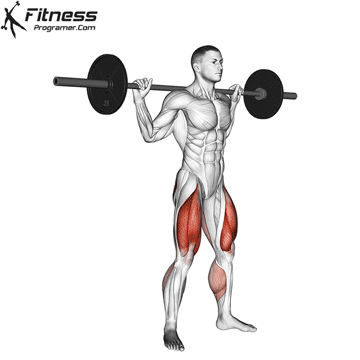Overview
The barbell bench front squat is a front-loaded squat variation where the lifter squats until the glutes lightly touch a bench placed behind them. It’s an effective lower-body exercise for teaching squat depth, reinforcing good posture, and focusing on quad development. By combining the benefits of front-loading and controlled depth, it becomes a smart option for both strength and hypertrophy.
How to do Perform Barbell Bench Front Squat
Set up a bench behind you and load a barbell into a front rack position across your shoulders.
Stand tall with feet shoulder-width apart and toes slightly turned out.
Brace your core, keep your chest up, and retract your shoulder blades.
Begin the descent by pushing your hips back and bending your knees, lowering until your glutes lightly touch the bench.
Pause briefly on contact without fully sitting down, keeping tension in your legs.
Drive through your heels to return to the standing position while maintaining an upright torso.
Tips for Proper Form
Keep elbows high to prevent the bar from rolling forward.
Maintain an upright chest and neutral spine throughout the movement.
Do not fully sit on the bench; just lightly tap to maintain tension.
Control the descent and avoid bouncing off the bench.
Engage your core throughout the movement to support your spine.
Common Mistakes
Letting the elbows drop, which causes the bar to roll forward.
Collapsing the chest or leaning too far forward.
Sitting fully on the bench, which removes muscle tension and control.
Rushing the descent, increasing the risk of poor depth control.
Placing feet too far forward, shifting stress away from the quads.
Benefits of the Barbell Bench Front Squat
Promotes Proper Squat Depth: The bench provides a physical depth cue, reinforcing consistent and safe squat mechanics.
Improves Postural Awareness: Front-loading with the barbell forces an upright posture, which reduces lower back strain.
Targets the Quads Intensely: The more vertical torso angle and controlled depth increase quadriceps involvement.
Enhances Core Stability: Holding the bar in the front rack position heavily engages the core to resist forward collapse.
Great for Beginners and Rehab: The bench gives lifters a confidence boost by eliminating depth guesswork.
Teaches Eccentric Control: Light bench contact promotes controlled movement rather than uncontrolled drops.
Easier on the Lower Back: Compared to back squats, this variation reduces spinal loading while still strengthening the legs.
How to Incorporate Into Your Routine
- For Beginners: Use 2 to 3 sets of 8 to 10 reps with light weight to focus on form and posture.
- For Hypertrophy: Perform 3 to 4 sets of 10 to 12 reps, maintaining controlled tempo and bench contact.
- For Strength: Try 4 to 5 sets of 4 to 6 reps with heavier weight, keeping bar position and core tight.
- For Functional Training: Combine 3 sets of 6 reps with unilateral or mobility-based drills for leg control.
- For Circuit Training: Add 10 to 12 reps into a lower-body or full-body circuit to improve quad endurance.
- For General Fitness: Include 2 to 3 sets of 8 to 10 reps once or twice per week to reinforce movement mechanics.
- For Recovery and Rehab: Use bodyweight or goblet bench squats to build confidence and control before returning to heavier loads.
Muscles Worked
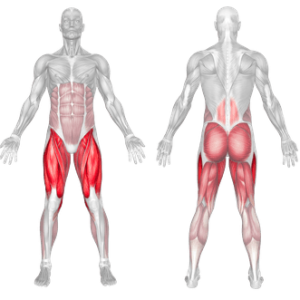
Frequently Asked Questions
What is the benefit of using a bench in front squats?
It provides a depth guide, helping lifters maintain consistent range of motion and proper posture.
Is this variation easier than regular front squats?
Yes, the bench adds a safety reference and makes the movement more beginner-friendly without compromising effectiveness.
Can I replace back squats with bench front squats?
Yes, especially if your goal is quad development, core strength, and reducing spinal load.
Should I touch or sit on the bench?
Only tap lightly to maintain tension and control. Do not fully sit during the movement.

